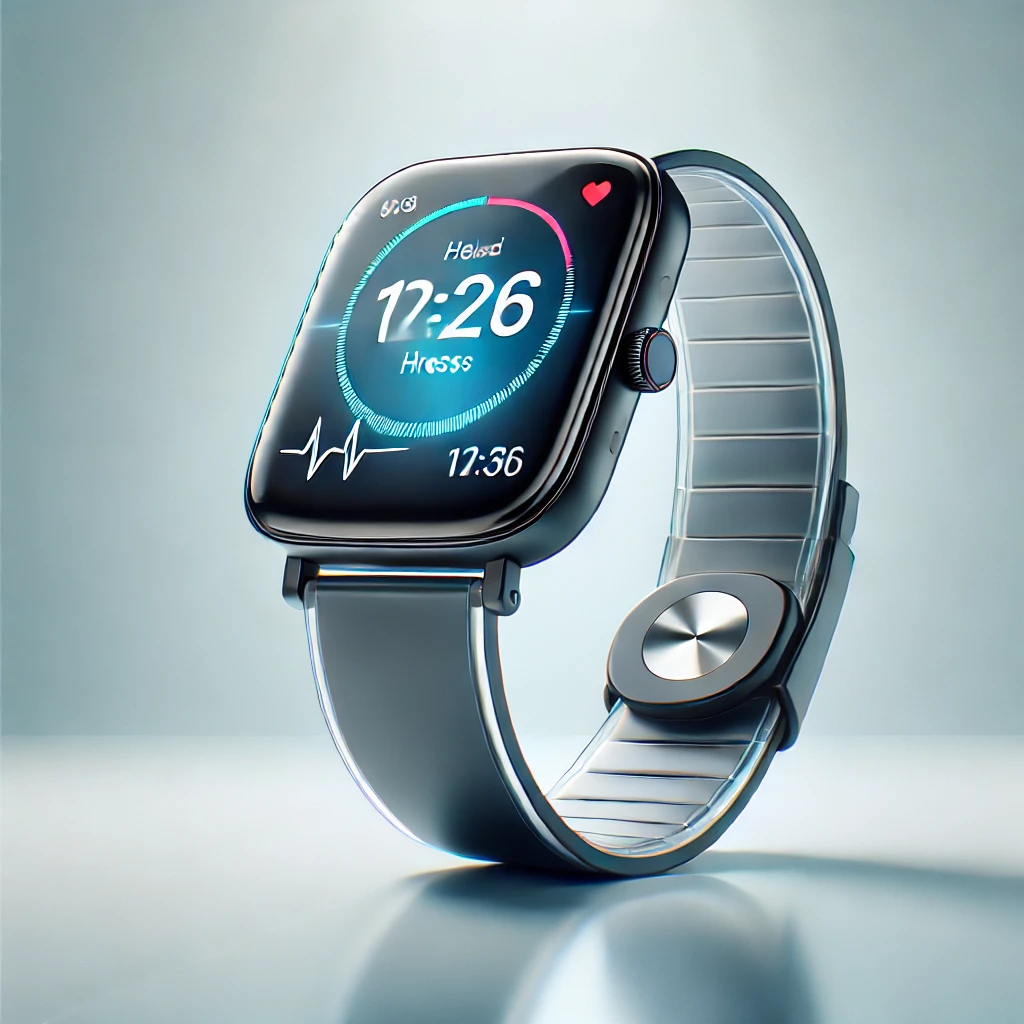With wearable technology advancing rapidly, smartwatches and fitness trackers are becoming indispensable tools. From monitoring steps to advanced features like blood pressure tracking, devices like the Magic of Smart Bracelet Watches demonstrate how far we’ve come. Imagine a world where you can monitor your blood pressure anytime, anywhere—without visiting a doctor or using cumbersome medical equipment. If you’re tech-savvy and budget-conscious, you’ve likely considered whether smartwatches can offer this convenience. With wearable technology advancing rapidly, blood pressure monitoring on smartwatches is more than a futuristic idea—it’s becoming a reality.

This blog explores how smartwatches measure blood pressure, their accuracy, limitations, and which models to consider if you’re looking for one. Whether you’re a fitness enthusiast or someone managing hypertension, this guide provides everything you need to know before investing in a smartwatch with blood pressure monitoring.
How Do Smartwatches Measure Blood Pressure?
Smartwatches measure blood pressure using optical sensors and, in some cases, an inflatable cuff mechanism integrated into the wearable. Here’s how the two primary methods work:
1. Optical Sensors (PPG Technology)
Photoplethysmography (PPG) is a technology that uses light to measure blood volume changes under your skin. The smartwatch emits light into your skin, and the reflected light is analyzed to estimate heart rate variability, which correlates to blood pressure.
- Pros: Non-invasive and convenient.
- Cons: Results can be influenced by skin tone, movement, and environmental lighting.
2. Cuff-Based Measurement
Some advanced smartwatches include an inflatable cuff mechanism that works like traditional blood pressure monitors. When activated, the cuff inflates to apply pressure to your wrist and calculates systolic and diastolic values.
- Pros: Offers more accurate readings.
- Cons: Bulky and less common due to higher costs.
Are Smartwatches Accurate for Measuring Blood Pressure?
Accuracy is one of the biggest concerns for users considering a smartwatch for blood pressure monitoring. Here’s what you should consider:
Factors Affecting Accuracy:
- Sensor Calibration
Most smartwatches require periodic calibration with a standard blood pressure monitor. Without proper calibration, readings can deviate significantly. - Positioning
For accurate results, the smartwatch must sit snugly on your wrist and be worn consistently during measurements. - External Conditions
Factors such as sweat, tattoos, and ambient lighting can interfere with optical sensor readings. - Individual Variations
People with certain medical conditions, such as irregular heartbeats, may find these devices less reliable.
Studies and Expert Opinions
A 2023 study published in the Journal of Medical Devices found that cuff-less smartwatches could provide a general trend of blood pressure changes but were not suitable for diagnosing hypertension. Experts recommend using smartwatches as complementary tools rather than replacements for traditional devices.
Top Smartwatches with Blood Pressure Monitoring
If you’re considering a smartwatch for blood pressure monitoring, here are some of the best options tailored for different budgets:
1. Samsung Galaxy Watch 6
- Features: Uses PPG technology and integrates seamlessly with Samsung Health. Requires calibration with a traditional monitor.
- Accuracy: Among the most reliable for daily tracking.
2. Amazfit GTS 4 Mini
- Features: Budget-friendly option with basic blood pressure tracking using PPG sensors.
- Accuracy: Suitable for trend tracking but less precise for clinical purposes.
3. Omron HeartGuide
- Features: FDA-cleared, inflatable cuff mechanism for accurate readings.
- Accuracy: Comparable to traditional blood pressure monitors.
4. Huawei Watch D
- Features: Advanced blood pressure tracking with micro-pumps for cuff-based accuracy.
- Accuracy: Clinically validated for daily monitoring.
Benefits of Blood Pressure Monitoring Smartwatches
1. Convenience
Smartwatches offer on-the-go monitoring, making it easier to track trends and stay proactive about your health.
2. Early Detection
By tracking fluctuations in blood pressure over time, smartwatches can help identify early warning signs of hypertension or other cardiovascular issues.
3. Integration with Health Ecosystems
Most devices sync with health apps, providing comprehensive insights into your overall well-being, including heart rate, activity, and sleep patterns.
4. Motivation for a Healthy Lifestyle
Seeing real-time data can encourage users to maintain healthy habits, such as exercising and managing stress levels.
Limitations and Considerations
Before purchasing a smartwatch for blood pressure monitoring, keep these limitations in mind:
- Not a Replacement for Medical Devices
While convenient, these devices are not yet a substitute for clinically approved sphygmomanometers. - Battery Life
Frequent use of sensors can drain the smartwatch battery, requiring daily charging. - Cost vs. Features
High accuracy often comes at a premium. Consider your budget and whether you need other features like ECG or sleep tracking. - Regulatory Approvals
Not all smartwatches with blood pressure monitoring are FDA-approved or meet global health standards.
How to Use a Smartwatch for Blood Pressure Monitoring Effectively
To get the best results, follow these tips:
- Calibrate Regularly:
Use a standard monitor to calibrate your smartwatch periodically, as recommended by the manufacturer. - Wear it Correctly:
Ensure a snug fit on your non-dominant wrist. Avoid taking readings during physical activity. - Measure at the Same Time Daily:
Consistency improves the reliability of trend tracking. Morning readings are often the most stable. - Combine with a Healthy Lifestyle:
Use smartwatch data to guide healthier choices like exercising, reducing salt intake, and managing stress.
FAQs About Smartwatches and Blood Pressure Monitoring
Q: Are smartwatches with blood pressure monitors safe to use?
A: Yes, they are safe for general use. However, they should complement medical advice, not replace it.
Q: How often should I calibrate my smartwatch?
A: Most manufacturers recommend calibrating once every 4 weeks or as needed.
Q: Can smartwatches detect hypertension?
A: They can help track trends and fluctuations but cannot diagnose medical conditions like hypertension.
Q: Which smartwatch is best for seniors?
A: The Omron HeartGuide is an excellent choice due to its clinical-grade accuracy and user-friendly design.
Conclusion
Smartwatches have revolutionized personal health monitoring, and blood pressure tracking is a significant milestone in this journey. While they may not yet replace traditional devices, they provide invaluable insights for managing your health proactively. If you’re tech-savvy and budget-conscious, choosing the right smartwatch can be a game-changer.
Interested in exploring more wearable tech options? Check out devices like the FitVII Slim Future Wearable Fitness Tech for advanced health monitoring.



